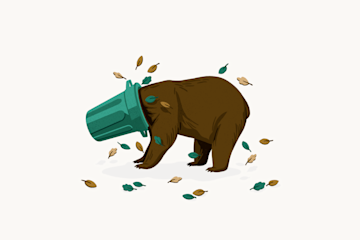
What is Stagflation? Understanding its Impact on Stocks and Real Estate
Stagflation occurs when an economy experiences both stagnation (slow economic growth) and inflation (rising prices) simultaneously. This rare but serious economic condition can significantly impact various investment assets and financial markets.
Understanding Stagflation
Stagflation combines two economic problems:
- Stagnation: Economic growth slows or stops, leading to higher unemployment and reduced business activity
- Inflation: Prices rise consistently while purchasing power decreases
The 1973-74 Oil Crisis provides the most notable historical example of stagflation. When OPEC imposed an oil embargo, energy prices skyrocketed, causing both economic slowdown and inflation in many Western economies.

Bear scavenging green garbage can
Impact on Different Assets
Stocks:
- Generally perform poorly during stagflation
- Companies struggle with higher costs and reduced consumer spending
- Value stocks tend to outperform growth stocks

image
Gold:
- Traditionally performs well during stagflation
- Acts as a hedge against inflation
- Maintains value when paper currencies depreciate
Real Estate:
- Mixed performance depending on property type
- Can provide inflation protection through rising rents
- May struggle due to reduced economic activity

Bear scavenging green garbage can
Combating Stagflation
Government and central banks can fight stagflation through:
- Supply-side economic policies
- Monetary policy adjustments
- Structural reforms to boost productivity
- Targeted fiscal stimulus

image
During stagflation, diversification becomes crucial for investors. While most assets struggle, some sectors like commodities, essential consumer goods, and utilities may offer better protection against this challenging economic environment.
Related Articles

5 Smart Investment Options for Beginners to Consider in 2025
